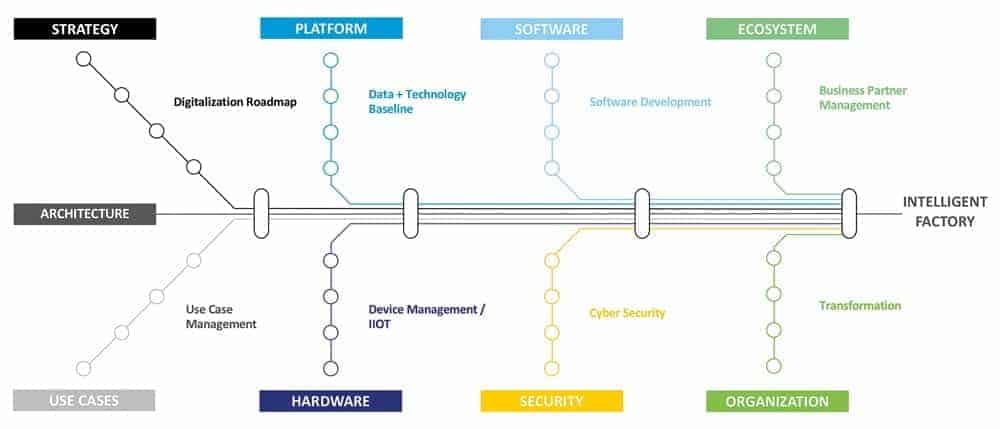End-to-end processes and the Intelligent Enterprise
![[shutterstock: 1619981350, Brigitte Pica2]](https://e3mag.com/wp-content/uploads/2020/12/shutterstock_1619981350.jpg)

Thanks to new technologies, this utopia of effectiveness and, above all, efficiency seems set to become reality soon. At least when companies develop into Intelligent Enterprises. The American scientist James Brian Quinn had already coined this term in his 1992 book "Intelligent Enterprise: A Knowledge and Service Based Paradigm for Industry." used. SAP currently uses the term for a concept that links the three areas of Experience, Intelligence and Operations by means of an endless belt.
The fact that E2E processes and the Intelligent Enterprise symbolized by an endless belt are related can be intuitively understood: It is imperative for companies to fundamentally address a method for identifying and implementing permanently rewarding E2E processes.
An example of the new situation is the (I)IoT environment - concretized in the idea of closed loop manufacturing. Here, not only production and product development are interlinked, so that data from the store floor (in particular data recorded via sensors on the machines and systems) is transmitted in real time to the development department and information on improvements to products and production processes based on this data is forwarded from the development department to the store floor. Processes from other departments such as logistics and quality management can also be integrated thanks to sensor and communication technology. And products can be included that have long been in use by customers.

Either companies try to formulate a vision and then define a strategy with an infinite number of individual aspects. This is the top-down variant. Or organizational units implement individual use cases. The hope with this bottom-up variant is that the isolated scenarios will ultimately result in an end-to-end E2E process.
Both approaches have their strengths - the holistic view on the one hand and concrete results on the other. They also have their respective weaknesses. For example, with the top-down approach, reality regularly overtakes planning - which often leads to nothing happening at all. In the bottom-up approach, the individual use cases can very quickly no longer be brought together and operated holistically. We therefore advocate a pragmatic mix of both approaches.
In an iterative procedure, companies should formulate the fundamental facets of a vision and the cornerstones of a strategy in a binding manner and, starting from this, begin to implement targeted use cases. In this way, the roadmap continues to develop in an agile manner.

In a volatile world with ever-changing opportunities and challenges, this is complex.
Because at no point in time is it really clear what is actually still to come, a flexible and scalable IT architecture is indispensable in addition to open people. Against this backdrop, and also in relation to companies from industry, SAP's Intelligent Enterprise approach makes sense above all because this openness has a firm place in it. Just a few years ago, this was glaringly different.
The will to collaborate is expressed by the platforms that have earned their name: first and foremost the SAP Cloud Platform and SAP Analytics Cloud, plus cloud components for controlling production and logistics. And there has also been a lot going on in terms of collaborations. For example, S/4 runs in the clouds of the hyperservers Alibaba, Amazon, Google and Microsoft. If SAP sticks to this approach, it will provide companies with a solid technological foundation for mapping constantly changing processes E2E.





